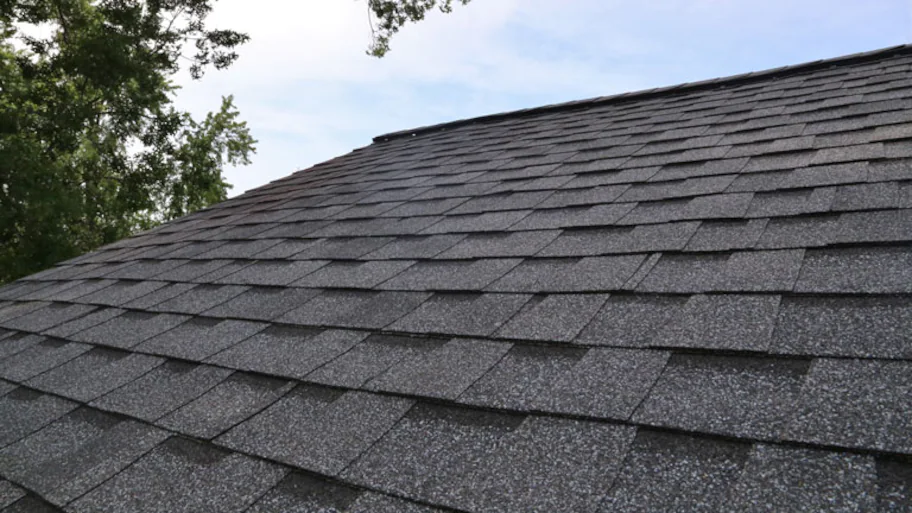Ideal Practices for Ensuring Proper Roof Covering Air Flow
Making sure proper roofing ventilation is crucial for the durability and efficiency of a roof system. A well balanced consumption and exhaust vent ratio, frequently 1:300, plays a critical function, with intake vents ideally put at the reduced side of the roof for amazing air entry and exhaust vents at the optimal for cozy air leave. Regular examinations to determine clogs and preserve clear air flow are vital. In addition, maintaining insulation far from vents is important to protect against air movement limitation. Comprehending these foundational components establishes the phase for more comprehensive understandings right into installation and maintenance methods that can substantially improve your roof system's efficiency.
Understand Ventilation Essentials
Appropriately understanding air flow basics is necessary for making certain the longevity and effectiveness of roof covering systems. Effective ventilation alleviates moisture buildup and temperature extremes in the attic, both of which can result in considerable architectural damage over time. A well-ventilated roofing assists in stopping usual concerns such as mold growth, wood rot, and ice dams, which can endanger the honesty of the roof covering products and the underlying structures.
The main objective of air flow is to assist in the motion of air, permitting a constant exchange between the exterior and interior atmospheres. This balance is achieved via a combination of intake and exhaust vents that interact to maintain ideal air flow. Intake vents, usually located along the eaves or soffits, enable fresh air to get in the attic room area, while exhaust vents, commonly situated at or near the roof ridge, make it possible for hot, damp air to leave.
Key factors influencing the effectiveness of roof air flow include correct positioning, appropriate sizing, and making sure that both intake and exhaust vents are unobstructed. Normal assessment and maintenance are vital to identify possible obstructions, damages, or ineffectiveness in the ventilation system, therefore securing the roof covering's efficiency and sturdiness.
Kinds of Roofing Vents
Roofing vents play a crucial function in keeping efficient attic ventilation and, by expansion, the general health of the roof system. Numerous kinds of roofing system vents are readily available, each with special advantages customized to details roof requirements.

Soffit vents are installed under the eaves and operate in tandem with roof vents to make certain a balanced intake and exhaust system. By permitting cooler air to enter from below, soffit vents promote the expulsion of warm air through top vents. Gable vents, located on the outside walls of the attic room, offer an additional reliable service, specifically in homes with gable roofings.
Examine Your Current Air Flow

Next, take into consideration the age and condition of your roofing materials and air flow elements. Older systems might not comply with existing building codes or may have deteriorated over time, minimizing their efficiency. Conduct a complete evaluation to identify any signs of damage, such as rust, damages, or voids that might endanger the system's performance.
Furthermore, gauge the attic temperature and humidity degrees. High temperatures and humidity can indicate poor ventilation - roofing companies in gainesville florida. Utilize a hygrometer and thermostat to obtain precise analyses, comparing them with exterior problems. Consistent discrepancies suggest possible issues that need resolving.
Installation Best Practices
Efficient installment of roofing ventilation systems is extremely important for making certain click to read optimal efficiency and durability. Correct setup begins with recognizing the certain ventilation needs of the roof covering and the structure it covers. This entails computing the appropriate proportion of consumption to exhaust vents, normally sticking to the 1:300 regulation, which stipulates one square foot of ventilation for each 300 square feet of attic room flooring area.

Consumption vents need to be set up at the roofing system's lower edge, typically in the soffits, to permit cool air to go into. Exhaust vents, on the various other hand, must be set up near or at the roof covering's top to help with the exit of cozy, wet air.
Seal all vent connections meticulously to avoid air leakages and prospective water infiltration. Use high-grade products and comply webpage with manufacturer guidelines to guarantee resilience and effectiveness. Additionally, integrating ridge vents with baffles can dramatically improve airflow efficiency by stopping wind-driven rainfall and snow from going into the attic room.
Inevitably, accurate installation of roof ventilation systems alleviates potential concerns such as mold and mildew development, ice dams, and structural damage, making sure the roof covering's stability and the building's overall health.
Regular Upkeep Tips
Consistency in maintenance techniques is basic to making certain the lasting performance of roof covering air flow systems. During these inspections, guarantee that vents are totally free of particles, nests, and other blockages that might hinder air flow.
Cleansing the vents is another necessary task. Use a soft brush or a vacuum to get rid of dust and debris from intake and exhaust vents. Be careful not to harm the air vent screens or louvers throughout the procedure. Furthermore, check the attic room space for any signs of water damages, which might endanger the stability of the roof.
Appropriate insulation is equally important. Make sure that attic insulation does not obstruct the vents, as this can badly restrict airflow. If any kind of insulation has shifted or resolved, rearrange or replace it to preserve a reliable obstacle.
Last but not least, replace any type of harmed or missing out on components without delay. Broken vents, split tiles, or scrubby flashing can all contribute to poor ventilation and must be dealt with immediately. Regular maintenance makes certain that the roof air flow system works optimally, thus prolonging the lifespan of the roofing system itself.
Conclusion
Ensuring correct roof ventilation is helpful hints vital for maintaining the efficiency and longevity of a roofing system. Adherence to the 1:300 intake and exhaust vent proportion, paired with the calculated placement of vents, is vital. Routine biannual assessments, debris cleaning, and making certain insulation does not block airflow are critical practices. Implementing these best methods will certainly promote a well-ventilated roof, thereby minimizing prospective issues associated with moisture accumulation and too much warm, eventually prolonging the roof's life expectancy.
A well balanced consumption and exhaust air vent proportion, generally 1:300, plays a crucial role, with intake vents ideally put at the lower side of the roofing for cool air entry and exhaust vents at the peak for warm air leave. Intake vents, commonly located along the soffits or eaves, enable fresh air to go into the attic room area, while exhaust vents, commonly located at or near the roof covering ridge, enable warm, damp air to run away.
Soffit vents are mounted under the eaves and work in tandem with roof covering vents to ensure a balanced consumption and exhaust system. By allowing cooler air to go into from below, soffit vents help with the expulsion of hot air with upper vents. Adherence to the 1:300 consumption and exhaust vent ratio, paired with the calculated placement of vents, is vital.